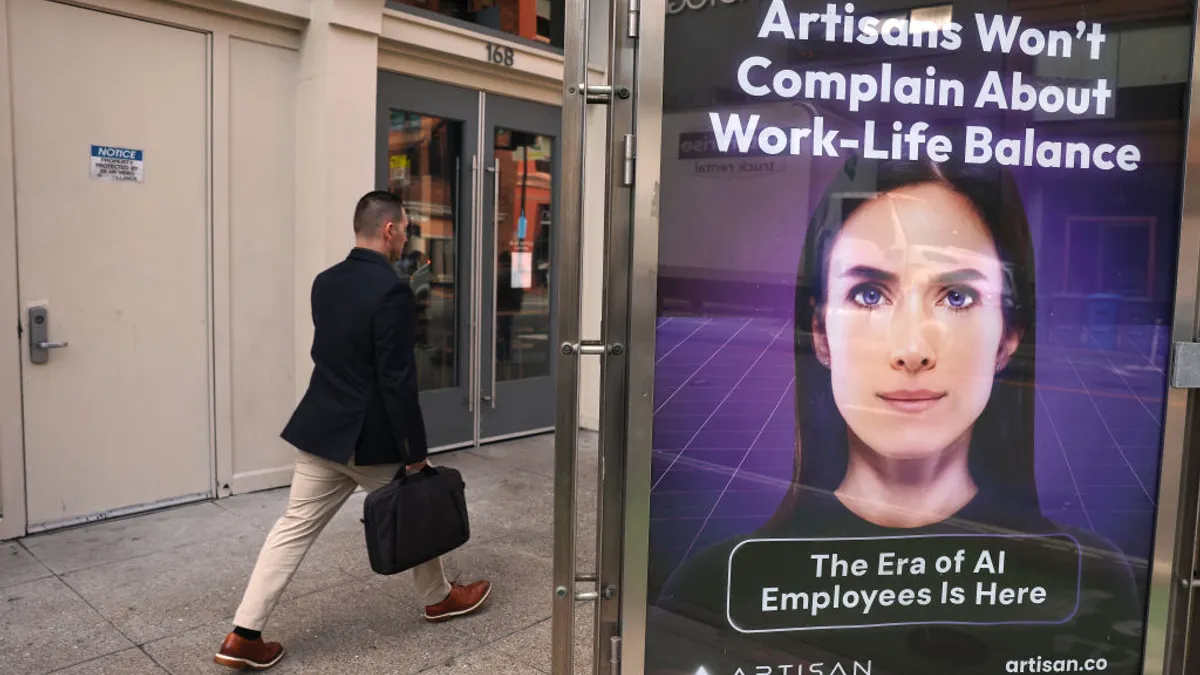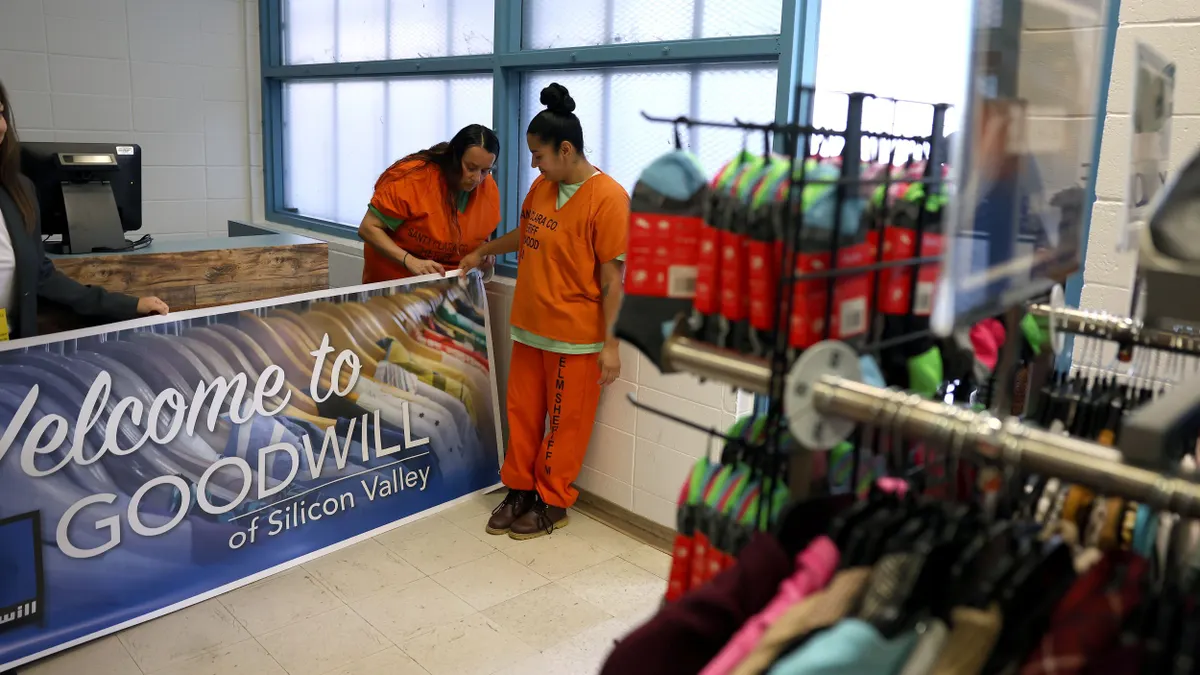For HR teams and the workforces they manage, 2023 may have felt like a Super Mario Bros. level — a winding, scrolling road filled with gaps and obstacles to navigate on the way to achieving end goals.
Take, for example, the macroeconomic environment, which produced uncertainty in the form of massive layoffs and persistent, though stabilizing, inflation. Compliance with state, federal and local laws grew more complex with new pay transparency requirements, enhanced protections for pregnant and nursing employees and a revitalized labor movement. Generative artificial intelligence shook up jobs of all shapes and sizes.
But the year had its positive developments, too. For one, the shift to a more employer-friendly talent market opened up access to needed talent. “We went from this really tight job market in 2022, whereas now, we’re getting more inbound applications now than [we] have in the last three to five years,” said Wes Burke, CHRO at Care.com.
Now moving into 2024, HR professionals oversee an ever-expanding range of functions within their organizations. The following trends represent some of the industry’s biggest short- and long-term challenges, according to sources who spoke to HR Dive.
#1: The RTO debate intensifies
Despite the long tail of the pandemic, permanent remote work appears to be a nonstarter for most organizations. Last August, a Resume Builder survey of business decision-makers found that 90% of companies planned to implement a return-to-office, or RTO, strategy by the end of 2024.
Whether employers mandate on-site attendance or maintain hybrid options, clashes over RTO policies signal a strained employer-employee relationship, said Mark Whittle, VP of research and advisory at Gartner’s HR practice. According to data Gartner shared with HR Dive in an email, 75% of HR leaders in a late 2022 survey had an on-site attendance requirement. But a separate survey conducted that year showed that nearly half of employees said the costs of going to the office outweighed the benefits.
Hybrid work may be a default model for HR as it navigates this tension, yet Whittle cautioned against the idea that it is a cure-all for RTO issues. “While most organizations feel that hybrid is the future, it is unsettled,” he said. “The idea that we’ll figure it out in the span of a few months or years is Pollyanna-ish.”
Executives who spoke to HR Dive detailed the various ways in which their organizations are experimenting with in-office requirements and flexibility. Financial services firm Synchrony, which has a large population of hourly workers, is allowing those employees to set hours that help them plan around child care and similar obligations, said Aaron Brown, the company’s senior VP and head of total rewards.
RTO may present cultural issues HR may not have previously considered. When Care.com began implementing its RTO policy last May, Burke said he began to notice anxiety around certain office norms, even something as simple as where workers ate lunch. The company’s HR team has taken part in hosting events that make the office a more desirable space even as it remains committed to hybrid work in the long term.
“What we’ve focused on is events that get as many people as we can in [the office],” Burke said. “HR can participate in that, but also democratize it.”
#2: AI is here, but questions abound
Chatbots took the world by storm in 2023, and AI has already made its mark on HR. The new year should see AI become even more intertwined with organizational processes and measurably affect productivity, Paulo Pisano, chief people officer at Booking.com, told HR Dive in an email.
“2024 is going to be a year in which the discussion around productivity — individual productivity, team productivity and business productivity — comes to the forefront of HR leaders’ minds,” he said. “As we focus more on this area, that’s where I see AI, including generative AI, entering the picture and accelerating the conversation.”
For HR, the tech could help analyze large amounts of employee feedback and provide a way to better answer employee questions about benefits, time off and pay, Brown said. But there are precautions employers will need to take in order to ensure data security. To that end, Synchrony has a responsible AI working group that includes representatives from the company’s HR and information technology teams and studies how AI will be implemented with human oversight, Brown added.
Whittle said that while HR teams are more aware of AI and trying to get a grasp on the tech, the average HR professional may need to rely on their vendors to help guide adoption.
“We believe at Gartner that a lot of HR functions are going to get their AI from their existing vendors,” he continued. “Your vendors are working on AI. They’re all working day and night to use AI and augment their existing software. You just need to relax. It’s being worked on, and you don’t need to be an expert on it.”
#3: Disengaged leaders present a training challenge
Increased responsibilities and difficulties in 2023 contributed to declining engagement among managers, according to Gallup research, and members of this group also may feel that their organizations do not care about their well-being.
Gartner has similarly found that managers are largely overwhelmed by the growth of their job responsibilities, Whittle said; he likened the situation to a “panini squeeze” in which managers are caught between the expectations of senior leaders above them and employees beneath them.
“It’s a big problem,” Whittle said, “and the issue is that managers are not okay.” HR departments can work to reduce managerial workloads and rebuild managerial pipelines, he added.
Leadership development is a top priority for Care.com, said Burke, who noted that he sees a lack of connection between managers and their reports, particularly since the pandemic shut down in-person work.
“We as leaders, self included, lost some critical skills during that time,” Burke said. “The part that is challenging is that the company becomes very faceless and you feel a little bit disconnected.”
Burke said the company is prioritizing retraining managers in areas like communication with the hope of improving downstream retention. “The reality is when you work with someone who connects with you and is supportive, you want to stay with that person.”
#4: Economic fluctuations spark financial well-being focus
Workers continue to face a difficult economic climate entering the new year. In September, a Bank of America workplace benefits report found that about two-thirds of employees said that the cost of living had risen faster than their income, while 42% rated their financial wellness as either good or excellent, the lowest share that the company had tracked in 13 years.
Employers already may have redoubled their financial well-being efforts to deal with rising costs, but this focus will be no less important in 2024. Brown said that Synchrony sought to tackle financial health before the pandemic by offering access to well-being coaches at on-site locations. In the years since, the company has expanded coaching access to employees’ family members as well.
#5: A more customized approach toward meeting mental health needs
Similar to the above, mental health represents a persistent workforce challenge. In its annual survey of large employers published in August, the Business Group on Health found that 77% of respondents had seen increased mental health issues in 2023.
HR may be able to better tailor organizational mental health strategy by improving its understanding of the needs of specific employee populations. Burke said that Care.com adjusted its strategy to better serve first-time parents, a group that forms a significant number of new hires at the company. Specifically, Burke said Care.com seeks to do a better job of ensuring parents return from leave successfully.
“You come back to work and you want to pretend like everybody does a great job of covering your duties while you’re gone, but there’s always stuff waiting for you,” Burke said. “How do we try to plan better for that?”
Leadership training is a part of the solution, and HR can work to educate managers about the anxieties employees may be facing and which benefits or programs could support them, he said. Burke added that Care.com is pushing leaders to think beyond the short term; “Not just six months, one-and-done, but we’re thinking about that person one or two years after that.”
When addressing well-being, HR should not be afraid to pilot new solutions. “If there’s a program that you think might help employees, give it a shot,” Brown said. “It’s been the right approach to move fast on this sort of thing so that employees can see that you’re supporting them and doing something about the feedback that you’re getting.”





















